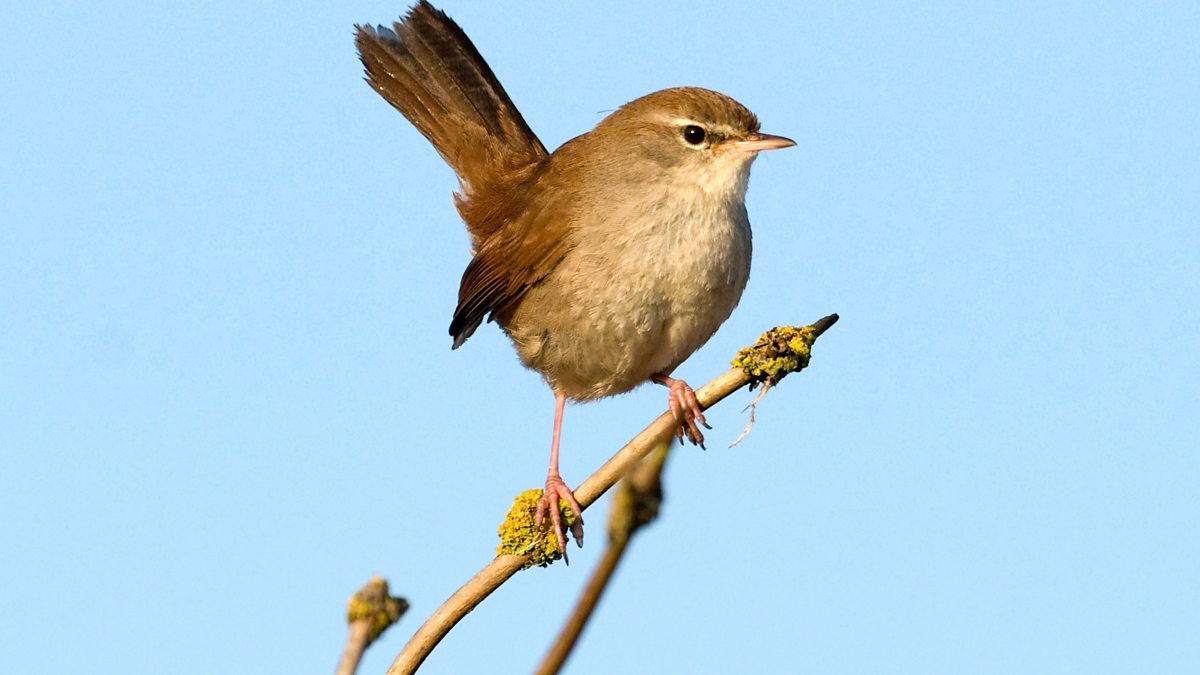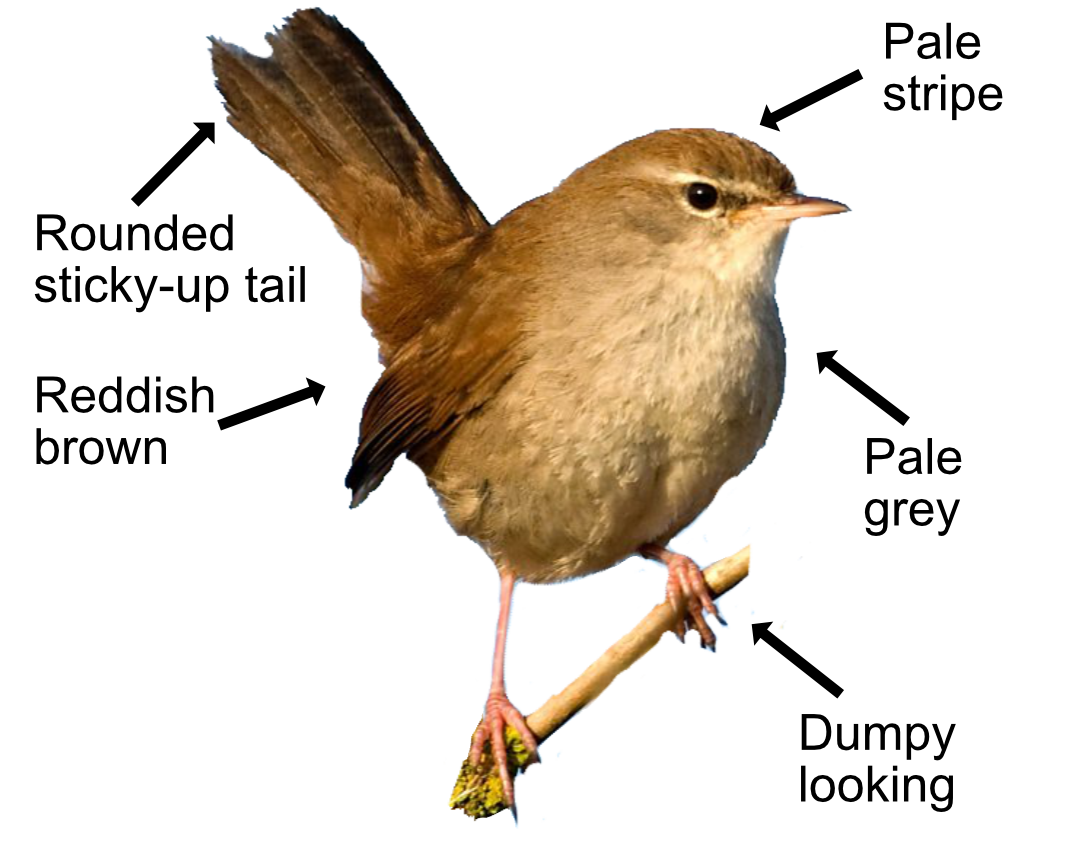
The secretive Cetti's Warbler (pronounced 'chetty') is easy to recognise as it is so damn loud and says his name. They first came here in 1972, having spread from the Mediterranean, and have quickly populated Southern Britain. They live in dense bushes, marshes or near rivers where there are brambles and willows with reed beds close by.
Slightly smaller than a House Sparrow, the Cetti's Warbler is a rather dumpy, Wren-like bird with reddish-brown upperparts, pale grey underparts, a whitish throat and a pale stripe over the eye. It has a broad, rounded tail which is often held up like a Wren's. The male dashes rapidly from song perch to song perch deep within bushes and gives a sudden explosively loud song which runs along the lines of "chet! chet-tee!" (or "chippy-chip-shop" if you prefer). It is loud, seriously loud. Their main food is insects, which they catch mainly on the ground.

The social life of a Cetti's Warbler can be a bit complex with some males having one female, while others with bigger territories can have up to four! The female builds a rough cup-shaped nest. It is positioned off the ground amongst vegetation. The male, meanwhile, is busy singing fit to burst to keep his territory and looking after his other wives. She lays and incubates 4-5 eggs, which hatch after 16 days. The youngsters can fly after 14 days and stay with mum and dad for a month. Dad will grudgingly help with feeding the first brood while the female gets on with a second. He is not much of a family man, more worried about maintaining his territory, which he does throughout the year.
The Cetti's Warbler is mainly resident, but numbers can fall after severe winters when insects are in short supply. There are about 2,000 pairs, mostly in South England. Their Latin name is 'cettia cetti' as they are named after an 18th century priest and zoologist, Francesco Cetti. Pretty cool being remembered by having a bird named after you.